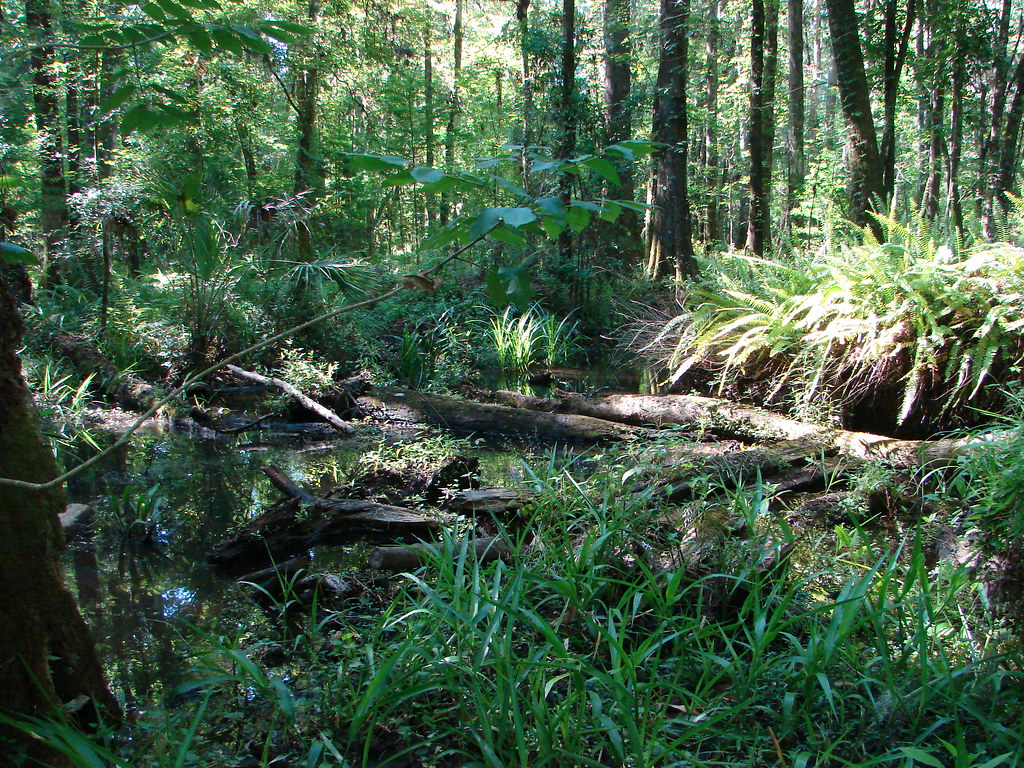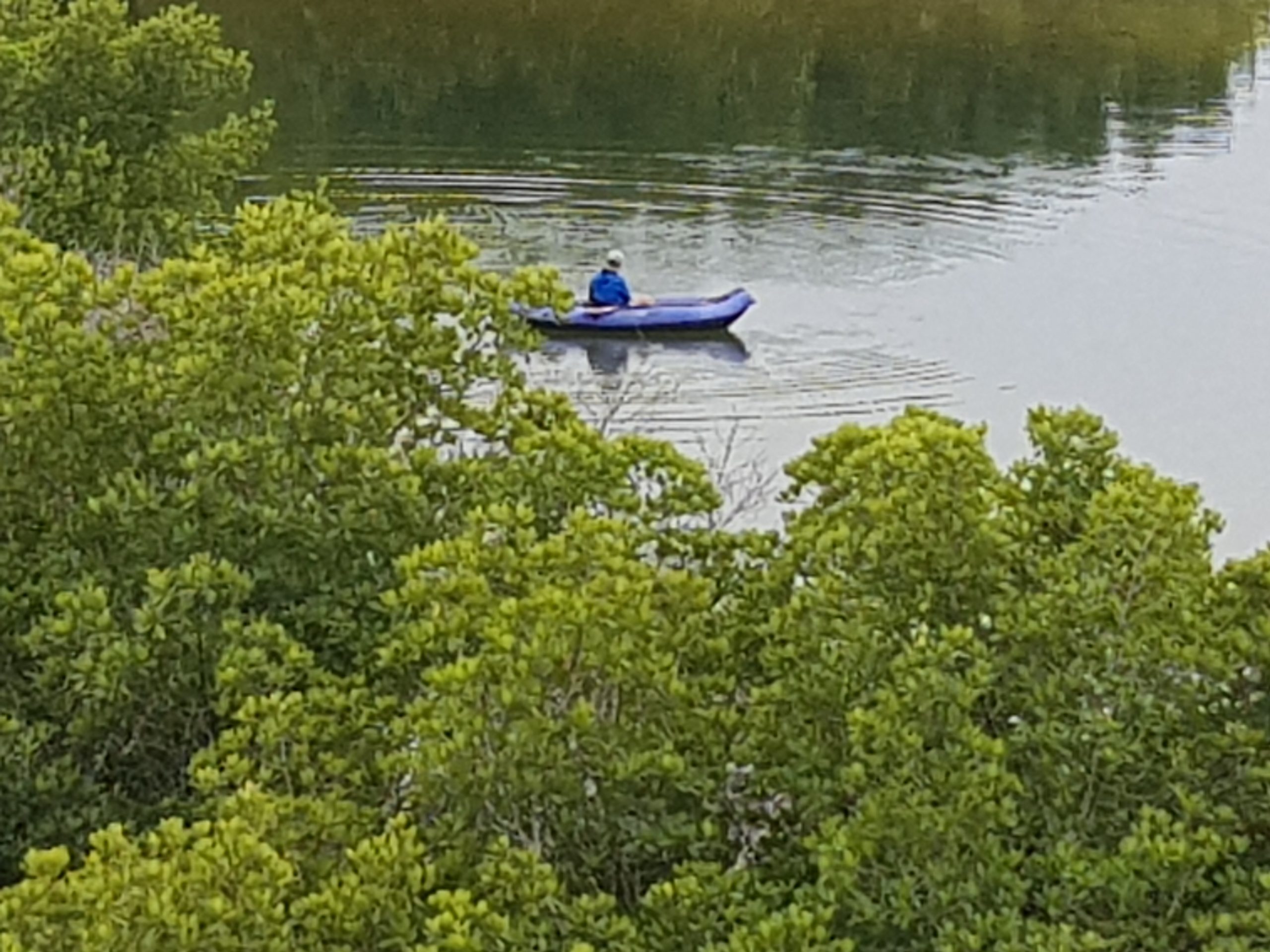
Photos courtesy Hillsborough County
At least in the Lower Green Swamp Preserve, where Hillsborough County will collect more than a million dollars over the next 10 years.
It gets complicated quickly, but those trees have become part of a “carbon bank” in a process that includes:
- A team of experts verifying the trees’ ability to capture the carbon dioxide that is driving climate change.
- A separate team verifying that the trees could be destroyed if they weren’t protected.
- A not-for-profit carbon bank buying those verified credits.
- The bank then selling them to other organizations to mitigate their carbon emissions.
Also known as the “cap and trade” system for limiting carbon emissions, it’s mandatory in both the EU and California. Around the world, it’s a $215 billion market that grew by 34% in 2019.
The Lower Green Swamp Preserve is just the first site in Hillsborough County, said Ross Dickerson, environmental lands manager. “We started there because of its size and mosaic of habitats but we’re definitely looking at other parks and even the potential for blue carbon.”
And just one section — an abandoned pine plantation in the southeast corner of the preserve — is included in the current bank.

The initial estimate predicted that the trees would capture 162 tons of carbon over a 10-year period, but the registry verified 320 tons locked in the trees and soil. The county expects to receive a check for about $200,000 in March.
Along with additional income that will help fund restoration of the pine forest with native longleaf pine as well as increased outreach, the carbon bank gives an added layer of protection to the preserve, Dickerson said. ‘We have a contract that says we won’t harm those trees for the next 40 years. That could prevent a road being built through a preserve if it became an issue at some point in the future, as it did with the Balm Scrub Preserve.”
Inventing the Wheel

Foresters sampled permanent plots to refine preliminary carbon stock estimates.
While it seems like a no-brainer now that it’s all over, getting to this point has been a long road. It began in 2009 with the county’s first management plan for the Lower Green Swamp Preserve, which raised the then-innovative concept of carbon banking as a means to increase revenues, with a 2020 to 2025 timeframe.
In 2018, the county issued a request for proposal for a consultant to guide the process. Three companies applied; the county selected SustainaBase, a West Palm Beach consultant.
“We started with a feasibility study. We wanted to know if it could even be done on a preserve and went from there,” Dickerson said. Phase II was completed with the Lower Green Swamp contract, and Phase III is now underway.
“The first phases really required that we invent the wheel as we went along, so things should move much more quickly now,” he said.
Phase III, which calls for extending the initiative to all county preserves, should be completed later this year. “We’ll start with the low-hanging fruit and then move through all the preserves — about 64,000 acres worth,” Dickerson said.

The biggest challenge remaining is proving that the trees need protection and that there are enough of them in any given spot to justify the process, says Matt Zirkelbach, president of SustainaBase.
The first criteria is marketability, which is how trees in the Lower Green Swamp Preserve qualified. Pine trees in the former plantation clearly had a market value and the county had the right to harvest and sell them.
And while there isn’t a market for oak trees, there are other trees with softer wood growing among the oak hammocks on county lands that could be harvested, Zirkelbach said.
The next criteria for a carbon bank is avoidance. In fast-growing Hillsborough County, that would include land that could have been purchased for development and the trees destroyed.
That’s likely to be a critical issue moving forward. County commissioners have set aside $75 million for land purchases over the next three to five years as part of the voter-approved Environmental Lands Acquisition and Management Program. “We already have $20 million in deals on the table,” Dickerson said.
Finally, carbon banks look at opportunities for restoration, although the pay-out comes over a longer period of time as trees grow into their full carbon-capturing potential, Zirkelbach said.
Where Could Blue Carbon Fit In?

The elephant in the room nearly every time carbon banking comes up in conversation is blue carbon, which is captured by mangroves, marshes and seagrasses. A 2017 study by the Tampa Bay Estuary Program, Tampa Bay Watch and Restore America’s Estuaries (RAE) indicates that coastal habitats in Tampa Bay can remove more than 3.8 million tons of carbon dioxide from the atmosphere over the next 100 years – equal to taking 7,981 passenger cars off the road every year until 2100.
The 320 tons verified as captured at the Lower Green Swamp clearly pales in comparison, but turning that captured blue carbon into cash is a bigger challenge.
Counting the carbon captured by trees is a relatively straight-forward methodology because it’s largely stored in trunks and canopies. With wetlands and seagrasses, the carbon is captured in soil. “It’s a very complex process to quantify it with a lot of research on the back end,” said Hilary Stevens, RAE’s coastal resilience manager.
For instance, researchers have documented that wetlands and seagrasses store about 10 times more carbon than even the lushest forest. Wet soils typically have low oxygen contents, so organic material containing carbon decays very slowly.
As with terrestrial forests, blue carbon must meet the three criteria — marketability, avoidance or restoration, Stevens said. The RAE study shows that Tampa Bay habitats restored since 2006 will capture 240,000 tons of carbon. Moving into the future, those would likely qualify for carbon credits.
But, as in the case of the Lower Green Swamp, it’s a long road to build that first wheel and actually get a check in the mail. “You’ll need economies of scale to make it work,” Stevens said. “If you have enough acres — say several hundred — it’s a better likelihood that it’s financially feasible.”
